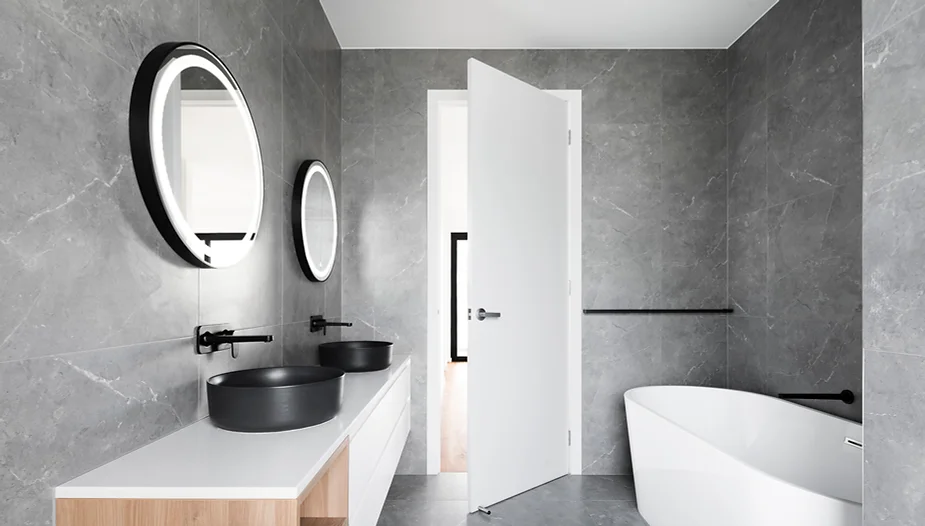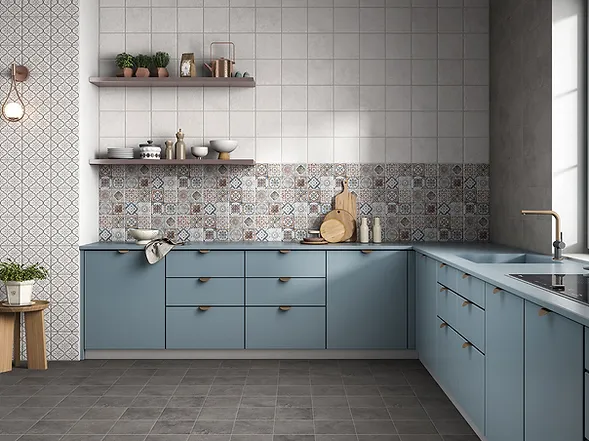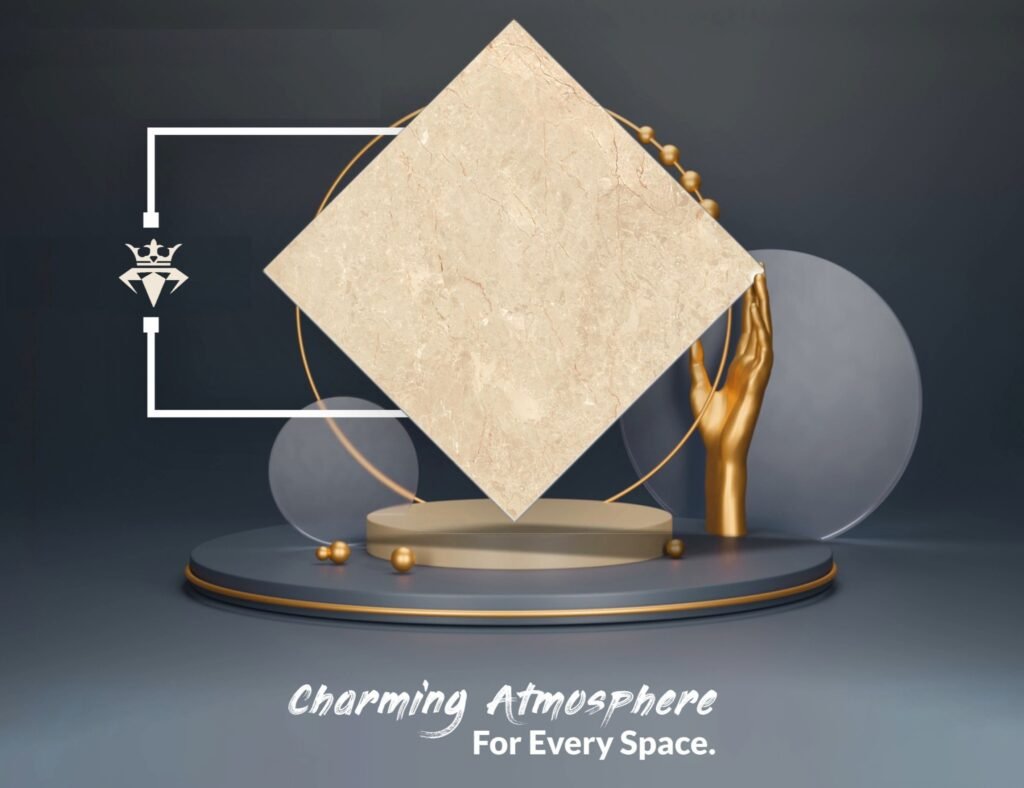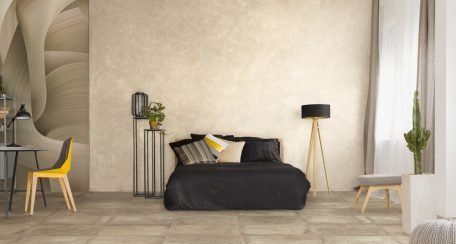How to Choose the Best Ceramic Tile for Your Bathroom and Kitchen

How to Choose the Best Ceramic Tile for Your Bathroom and Kitchen In this article, we will answer the following questions and many of your inquiries: What are the key factors to consider when selecting ceramic tiles for bathrooms and kitchens? Which types of ceramic tiles are best suited for high-moisture areas like bathrooms and kitchens? How important is durability when choosing ceramic tiles, and how can I determine a tile’s durability? What are some safety considerations regarding slip resistance when selecting tiles for bathrooms and kitchens? How can I ensure that the ceramic tiles I choose align with the overall design and color scheme of my home? Are there any environmentally friendly options available when it comes to selecting ceramic tiles for my bathroom and kitchen? What are some of the emerging trends in porcelain and ceramic tiles for bathrooms and kitchens in 2024? Article Content: Introduction Understanding Ceramic Tiles Factors to Consider Choosing the Right Tile Other Considers The trend porcelain and ceramic in 2024 for bathroom and kitchen The Most Popular Porcelain and Ceramic Company in 2024 Conclusion Introduction: Selecting the right ceramic tiles for your bathroom and kitchen can significantly impact these spaces’ overall aesthetic appeal and functionality. With many options available in the market, ranging from different materials, colors, sizes, and textures, it can be overwhelming to make the best choice. However, with some guidance and understanding of your requirements, you can navigate through the options and choose the perfect ceramic tiles for your needs. In this comprehensive guide, we will delve into the factors to consider when selecting ceramic tiles for your bathroom and kitchen, ensuring that you make an informed decision that aligns with your style preferences and practical needs. Related Blogs: 10 Simple Steps to Deep Clean Your Kitchen Tiles: A Sparkling Guide Understanding Ceramic Tiles: Ceramic tiles are a popular choice for bathroom and kitchen surfaces due to their durability, versatility, and aesthetic appeal. Made from clay that is kiln-fired at high temperatures, ceramic tiles come in various types, including porcelain, terracotta, and earthenware. Porcelain tiles, known for their strength and water resistance, are particularly suitable for high-moisture areas like bathrooms and kitchens. On the other hand, terracotta tiles offer a rustic charm and are often used to add warmth to kitchen spaces. Understanding the different types of ceramic tiles and their properties is essential for making an informed decision. Factors to Consider: Durability of Ceramic: When choosing ceramic tiles for your bathroom and kitchen, durability is paramount. These areas experience high foot traffic and exposure to moisture, requiring tiles that can withstand daily wear and tear. Porcelain tiles, with their dense composition and low water absorption rate, are highly durable and suitable for both residential and commercial settings. Consider the PEI (Porcelain Enamel Institute) rating, which indicates the tile’s resistance to abrasion and wear, with higher ratings indicating greater durability. Water Resistance: Given the high humidity and moisture levels in bathrooms and kitchens, opting for water-resistant ceramic tiles is crucial to prevent damage and mold growth. Porcelain tiles, being non-porous, offer excellent water resistance, making them ideal for wet areas. Additionally, consider tiles with a glazed finish, which adds an extra layer of protection against water infiltration. Slip Resistance: Safety is paramount, especially in areas prone to spills and splashes like bathrooms and kitchens. Look for ceramic tiles with textured or slip-resistant surfaces to minimize the risk of accidents, particularly in wet conditions. Tiles with a matte or textured finish provide better traction than glossy tiles, reducing the likelihood of slips and falls. Size and Layout of Ceramic: The size and layout of ceramic tiles can significantly impact the visual perception of your bathroom and kitchen spaces. Larger tiles create a sense of spaciousness and continuity, ideal for open-plan layouts and modern aesthetics. Conversely, smaller tiles allow for intricate patterns and designs, adding visual interest to walls and floors. Consider the scale of your space and the desired aesthetic when selecting tile sizes and layouts. Related Blog: Choosing the Right High Gloss Finish: A Comprehensive Guide Color and Design: The color and design of ceramic tiles play a pivotal role in defining the ambiance and style of your bathroom and kitchen. Neutral tones like white, beige, and gray create a timeless backdrop, allowing you to experiment with accents and accessories. Alternatively, bold colors and patterns can inject personality and drama into the space, serving as focal points or statement pieces. Consider the overall color scheme and design theme of your home when selecting ceramic tiles to ensure cohesion and harmony. Maintenance and Cleaning: Easy maintenance and cleaning are essential considerations when choosing ceramic tiles for your bathroom and kitchen. Opt for tiles that are resistant to stains, scratches, and chemical damage, minimizing the effort required for upkeep. Porcelain tiles, with their smooth and non-porous surface, are relatively easy to clean with regular sweeping and mopping. Avoid porous tiles or those with intricate textures, as they may trap dirt and grime, making cleaning more challenging. Budget: Establishing a budget upfront will help narrow down your options and prevent overspending on ceramic tiles. While porcelain tiles tend to be more expensive than other types of ceramic tiles, they offer superior durability and longevity, making them a worthwhile investment in the long run. However, there are budget-friendly alternatives available that offer decent quality and aesthetics, allowing you to achieve your desired look without breaking the bank. Consider factors such as material, size, and brand reputation when evaluating the cost-effectiveness of ceramic tiles. Choosing the Right Tile: After considering the aforementioned factors, it’s time to choose the right ceramic tiles for your bathroom and kitchen. Start by narrowing down your options based on your specific requirements and preferences, taking into account factors such as durability, water resistance, slip resistance, size, color, design, maintenance, and budget. Visit local tile showrooms or browse online catalogs to explore the available options and gather inspiration for your project. Don’t hesitate to seek advice from design professionals or tile experts
10 Simple Steps to Deep Clean Your Kitchen Tiles

10 Simple Steps to Deep Clean Your Kitchen Tiles In this article, we will address several questions and inquiries you mayhave: What is the primary benefit of deep cleaning kitchen tiles beyond aesthetics? What are three essential supplies needed for cleaning kitchen tiles? How can you pre-treat stubborn stains before deep cleaning? What natural cleaning solutions can be used for kitchen tiles? How can you effectively clean grout between tiles? What preventative measures can be taken to minimize the need for frequent deep cleaning? Article Contents: introduction Unsung Hero of Kitchen Gathering Your Supplies Step 1: Preparation Step 2: Pre-Cleaning Step 3: Right Cleaning Solutions Step 4: The Deep Clean Step 5: Grout Cleaning Step 6: Drying and Polishing Step 7: Preventative Measures Step 8: Dealing with Stubborn Stains Step 9: Tile Care Tips Step 10: Post-Cleaning Inspection Conclusion Introduction The kitchen is often the heart of the home, and sparkling clean tiles contribute greatly to its overall charm. Maintaining your kitchen tiles enhances aesthetics and promotes a healthy cooking environment. The Unsung Hero of Kitchen Hygiene: Kitchen Tiles Kitchen tiles face daily spills, stains, and crumbs. They provide a durable surface, but they also require regular care to keep looking fresh. Not just beautiful, but also clean tiles help reduce germs and allergens in your cooking space. Why Deep Cleaning Matters: More Than Just Aesthetics Deep cleaning of your kitchen tiles helps prevent the build-up of grime, aids in odor elimination and keeps your kitchen environment safe. Regular maintenance helps extend the life of your tiles, making them last longer and look better. “You might want to read our blog to learn about how to choose the best ceramic tile for your bathroom and kitchen.” Setting the Stage: Gathering Your Supplies Before diving into the cleaning process, gather your supplies. You’ll need: A broom and dustpan Mop and bucket Soft brushes or sponges Cleaning solutions (either store-bought or homemade) Grout cleaner (if necessary) Microfiber cloths Rubber gloves Step 1: Preparation is Key – Clearing the Decks Clearing the Clutter: Removing Obstacles Start by removing everything from your kitchen surfaces. Clear countertops, tables, and other areas where dirt can accumulate. This allows you to access all tiles and prevent damage to other kitchen items. Protecting Your Surfaces: Preventative Measures Lay down towels or sheets to catch drips and spills. Consider using painter’s tape to protect the edges of the countertops and cabinets. “You might prefer the Matte Tile for your new kitchen. We can help you step by step.” Step 2: Pre-Cleaning – Removing Loose Debris The Power of the Broom: Sweeping Away the Loose Dirt Begin by sweeping the floor. This gets rid of crumbs and dirt that might scratch the tiles during cleaning. Tackling Stubborn Stains: Pre-treatment Techniques For tough stains, use a damp cloth and a gentle cleaner to pre-treat problem areas. Let it sit for a few minutes to break down the grime. Step 3: Choosing the Right Cleaning Solutions Natural Cleaning Solutions: Vinegar, Baking Soda, and Lemon Juice Opt for eco-friendly cleaners like vinegar, baking soda, or lemon juice. Mix them with water to create effective cleaning solutions, safe for both you and your tiles. Commercial Cleaning Products: Selecting the Right One for Your Tiles If you prefer commercial products, choose one that fits your tile type—ceramic, porcelain, or stone. Always check the label for compatibility. Understanding Tile Types: Matching Cleaners to Materials Knowing your tile material helps in selecting the best cleaner. Using the wrong product could damage your tiles. “You might prefer the High Gloss Tile for your new kitchen. We can help you step by step.” Step 4: The Deep Clean – Scrubbing and Rinsing Effective Scrubbing Techniques: Elbow Grease and Smart Tools Using a sponge or soft brush, scrub the tiles in a circular motion. Pay special attention to grout lines. For tough spots, consider using a toothbrush for precision. Rinsing Thoroughly: Removing All Traces of Cleaner After scrubbing, rinse the mop or sponge and wipe down the tiles with clean water. This removes any lingering cleaning solution. Step 5: Grout Cleaning – Addressing the Often-Overlooked Grout Cleaning Tools: Brushes, Sponges, and Steam Cleaners Grout can be tricky. Use a stiff brush or sponge specifically designed for grout cleaning. For deeper dirt, a steam cleaner can be very effective. Effective Grout Cleaning Solutions: Removing Grime and Mildew For stubborn mildew, create a paste with baking soda and water. Apply it to the grout and let it sit before scrubbing. Step 6: Drying and Polishing – Achieving That Sparkling Finish Thorough Drying: Preventing Water Spots and Mold After rinsing, dry the tiles with a microfiber cloth. This helps prevent water spots and mold. Polishing for a Gleaming Shine: Restoring the Tiles’ Luster To enhance shine, apply a small amount of tile-specific polish. Buff gently with a clean cloth for a sparkling finish. “You might prefer the Gloss Tile for your new kitchen. We can help you step by step from selection to installation.” Step 7: Preventative Measures – Maintaining a Clean Kitchen Regular Cleaning Schedule: Preventing Build-Up Create a weekly cleaning schedule to keep tiles and grout in top condition. Regular maintenance cuts down on heavy cleaning later on. Smart Storage Solutions: Minimizing Spills and Messes Implement storage solutions to avoid spills. Use trays for spices and condiments to contain messes. Step 8: Dealing with Stubborn Stains – Targeted Cleaning Grease and Oil Stains: Effective Removal Techniques For grease stains, sprinkle baking soda directly on the area and let it sit. Wipe away with a damp cloth to lift the stain. Mildew and Mold Removal: Prevention and Treatment Use vinegar or hydrogen peroxide to remove mold. Spray on and let it sit before scrubbing and rinsing. Step 9: Protecting Your Investment – Tile Care Tips Avoiding Harsh Chemicals: Protecting Tile Integrity Steer clear of harsh chemicals that can erode your tile’s surface. Stick to gentle cleaners for long-lasting beauty. Best orthopedic hospital in guntur Regular Maintenance: Keeping Your Tiles Sparkling Don’t
A Guide to Choosing the Best Floor and Wall Tiles for Your Bedroom

A Guide to Choosing the Best Floor and Wall Tiles for Your Bedroom In this forthcoming article, we endeavor to providecomprehensive responses to the following queries and amultitude of other pertinent inquiries about the best tiles for bedroom: What should you consider about room size when choosing bedroom tiles? How do modern and traditional tile styles differ? Why are porcelain tiles a good choice for humid environments? What are the main benefits of vinyl tiles? What makes natural stone tiles unique and luxurious? How do glossy and matte finishes differ in maintenance? Why are light-colored tiles recommended for small bedrooms? What is a key tip for ensuring the longevity of your bedroom tiles? Article Content: Introduction Understanding Your Needs Types of Floor Tiles Types of Wall Tiles Choosing the Right Tile Finish Color and Pattern Considerations Practical Tips for Choosing Tiles Conclusion Introduction When it comes to designing your bedroom, one of the most impactful decisions you’ll make is selecting the right floor and wall tiles. The choice of tiles not only affects the aesthetics of your room but also its functionality and comfort. This comprehensive guide will help you navigate through the myriad of options to find the perfect tiles for your bedroom. Gallery App Understanding Your Needs Before diving into tile types and designs, it’s crucial to understand your specific needs and preferences. Consider the following factors: 1. Room Size and Layout Small Rooms: Light-colored tiles can make a small room appear larger and more open. Large Rooms: Darker or patterned tiles can add warmth and intimacy. 2. Style and Aesthetics Modern: Opt for sleek, minimalist designs with neutral tones. Traditional: Choose tiles with classic patterns and warmer hues. Rustic: Natural stone or wood-look tiles can create a cozy, rustic feel. 3. Maintenance and Durability Low Maintenance: Porcelain and ceramic tiles are easy to clean and maintain. High Durability: Natural stone tiles like granite and marble are highly durable but may require more upkeep. 4. Comfort Warmth: Consider heated floor tiles or options that retain heat well, especially in colder climates. Softness: Cork or vinyl tiles can offer a softer surface underfoot. Types of Floor Tiles for Bedroom 1. Ceramic Tiles Ceramic tiles are a popular choice due to their versatility and affordability. They come in various designs, colors, and finishes, making them suitable for any bedroom style. Pros Cons Durable and long-lasting Can be cold underfoot Easy to clean May crack under heavy impact Wide range of designs hhh 2. Porcelain Tiles Porcelain tiles are denser and more durable than ceramic tiles. They are also more resistant to moisture, making them an excellent choice for humid environments. Pros Cons Highly durable and hard-wearing More expensive than ceramic tiles Low water absorption rate Can be difficult to cut and install Available in various styles hhh 3. Natural Stone Tiles Natural stone tiles like marble, granite, and slate offer a luxurious and timeless appeal. Each piece is unique, adding character to your bedroom. Pros Cons Unique and elegant appearance Expensive Highly durable Requires regular sealing and maintenance h Can be cold and hard underfoot 4. Vinyl Tiles Vinyl tiles are a budget-friendly and comfortable option. They are available in various designs, including wood and stone looks, providing flexibility in design. Pros Cons Soft and comfortable underfoot Less durable than ceramic or porcelain tiles Water-resistant and Affordable Can fade over time with exposure to sunlight Easy to install and maintain hhh 5. Cork Tiles Cork tiles are an eco-friendly option, known for their softness and warmth. They provide a unique texture and appearance. Pros Cons Soft and comfortable underfoot Can be susceptible to moisture damage Insulating properties Requires regular sealing Eco-friendly hhh Pros Cons Soft and comfortable underfoot Can be susceptible to moisture damage Insulating properties Requires regular sealing Eco-friendly hhh Types of Wall Tiles for Bedroom 1. Ceramic Wall Tiles Ceramic tiles are a versatile option for bedroom walls, offering a wide range of colors,patterns, and finishes. Pros Cons Easy to clean Less impact-resistant compared to porcelain Wide variety of designs Can crack under heavy impact Cost-effective hhh 2. Porcelain Wall Tiles Porcelain tiles, while more commonly used for floors, can also be an excellent choice for bedroom walls, particularly in humid climates. Pros Cons Highly durable More expensive than ceramic Low maintenance Difficult to install Water-resistant hhh 3. Glass Tiles Glass tiles are a stylish and modern option for bedroom walls. They reflect light, adding brightness and a sense of space. Pros Cons Reflective and brightens the room Can be expensive Easy to clean Susceptible to scratching Stain-resistant hhh 4. Natural Stone Tiles Natural stone tiles add a touch of luxury and elegance to bedroom walls. Each tile is unique, creating a bespoke look. Pros Cons Unique and luxurious appearance Expensive Durable Requires regular maintenance 5. Mosaic Tiles Mosaic tiles offer the flexibility to create intricate patterns and designs, making them an excellent choice for feature walls. Pros Cons Versatile and customizable Can be labor-intensive to install Adds artistic flair More grout lines to clean Easy to clean hhh Choosing the Right Tile Finish 1. Glossy Finish Glossy tiles reflect light, making a room appear brighter and more spacious. They are easy to clean but can show smudges and fingerprints more easily. 2. Matte Finish Matte tiles offer a non-reflective surface, providing a more subtle and sophisticated look. They are less likely to show smudges but can be harder to clean. 3. Textured Finish Textured tiles add depth and interest to a room. They can mimic natural materials like stone and wood, providing a tactile element to your design. Color and Pattern Considerations 1. Light Colors Light-colored tiles can make a room feel more open and airy. They are an excellent choice for small bedrooms or rooms with limited natural light. 2. Dark Colors Dark-colored tiles add warmth and coziness to a room. They are ideal for larger spaces where you want to create a more intimate atmosphere. 3. Neutral Colors Neutral colors like beige, gray, and white provide a versatile backdrop that can match
A Guide to Glossy Tiles: From Selection to Installation

A Guide to Glossy Tiles: From Selection to Installation Updated: Dec 25, 2024 In this article, we will answer the following questions and many of your inquiries about glossy tiles: What factors should be considered when choosing the gloss level for glossy ? What are the key differences between ceramic and porcelain tiles? How do glass tiles compare to natural stone tiles regarding durability and maintenance? What are the advantages of using larger and smaller tiles in a space? What are the essential steps involved in installing glossy? How can the potential slipperiness of glossy be mitigated in high-traffic areas? Article Contents: Introduction Understanding Glossy Tiles Material Considerations Size and Shape Color and Pattern Installation Considerations Advantages of Glossy Disadvantages of Glossy Explore One of the Top Brands of Glossy Conclusion Introduction Glossy tiles, characterized by their reflective surface, have long been a popular choice for both walls and floors. Their ability to enhance the perceived brightness and size of a space, coupled with their elegant aesthetic, makes them a versatile addition to any interior design scheme. However, selecting the right glossy requires careful consideration of factors such as material, size, color, and installation. This comprehensive guide will delve into the intricacies of choosing and using glossy tiles, providing you with the information you need to make informed decisions. Related Blogs: Choosing the Right High Gloss Finish: A Comprehensive Guide Understanding Glossy Tiles Glossy are finished with a highly polished surface that reflects light. This reflective quality can create a sense of luxury and sophistication. The level of gloss can vary, with some tiles offering a more subdued sheen while others exhibit a mirror-like finish. The choice of gloss level depends on personal preference and the overall design aesthetic of the space. Material Considerations Glossy are available in a variety of materials, each with its unique characteristics andadvantages: Related Blogs: How to Choose the Best Ceramic Tile for Your Bathroom and Kitchen Ceramic: Ceramic tiles are a popular choice for both walls and floors. They are durable, affordable, and come in a wide range of colors, patterns, and finishes. Ceramic glossy are often used in kitchens, bathrooms, and entryways. Porcelain: Porcelain tiles are a denser and more durable type of ceramic tile. They are often used in high-traffic areas, such as hallways and living rooms. Porcelain glossy can mimic the appearance of natural stone, such as marble or granite. Glass: Glass tiles offer a sleek and modern look. They are available in a variety of colors and can be used to create stunning backsplashes, feature walls, and shower enclosures. Glass glossy are highly reflective and can significantly brighten a space. Natural Stone: Natural stone tiles, such as marble, granite, and travertine, can be polished to achieve a glossy finish. While natural stone tiles are generally more expensive than ceramic or porcelain, they offer a unique and luxurious look. Mosaic: Mosaic tiles are composed of small, individual pieces that can be arranged in various patterns. Glossy mosaic tiles can add a touch of texture and interest to any space. Size and Shape of Glossy Tiles The size and shape of glossy tiles can significantly impact the overall appearance of a space. Larger tiles can create a clean and minimalist look, while smaller tiles can add texture and detail. The shape of the tiles can also influence the design aesthetic. For example, square tiles are a classic choice, while rectangular tiles can create a sense of movement. Related Blogs: A Guide to Choosing the Best Floor and Wall Tiles for Your Bedroom Color and Pattern of Glossy Tiles Glossy are available in a wide range of colors and patterns. The color and pattern of the tiles should complement the overall design scheme of the space. Light-colored glossy tiles can brighten a room, while darker tiles can create a more dramatic effect. Patterns, such as geometric shapes or floral designs, can add interest and personality to the space. Installation Considerations of Glossy Tiles Installing glossy requires careful planning and execution. The tiles should be installed on a level and even surface. The adhesive used should be appropriate for the type of tile and the substrate. Grout should be chosen to match the color and style of the tiles. Proper sealing is essential to protect the tiles from stains and moisture. Advantages of Glossy Tiles Enhanced Brightness: Glossy reflect light, making spaces appear brighter and more spacious. Increased Visual Appeal: Glossy can create a luxurious and sophisticated look. Easy to Clean: The smooth surface of glossy tiles is easy to clean and maintain. Versatility: Glossy are available in a wide range of materials, colors, and patterns, making them suitable for various design styles. Increased Property Value: Installing glossy can increase the perceived value of a property. Increased Visual Appeal: Glossy can create a luxurious and sophisticated look. Increased Visual Appeal: Glossy can create a luxurious and sophisticated look. Related Blogs: A Guide to Choosing the Best Floor and Wall Tiles for Your Bedroom Disadvantages of Glossy Tiles Slippery Surface: Glossy can be slippery when wet, especially in high-traffic areas. Maintenance Requirements: Glossy may require more frequent cleaning and maintenance than matte tiles. Cost: Glossy , especially those made from natural stone or high-end materials, can be more expensive than other types of tiles. Sensitivity to Scratches: Glossy may be more susceptible to scratches than matte tiles. Explore One of the Top Brands of Glossy Tiles Diamond Vitrified is a renowned brand specializing in high-quality porcelain and ceramic tiles, including glossy finishes. Known for their durability, versatility, and aesthetic appeal, Diamond Vitrified tiles offer a wide range of options to suit various design preferences. From sleek and modern to classic and elegant, their glossy are ideal for both residential and commercial spaces, adding a touch of sophistication and luxury. With a commitment to innovation and quality, Diamond Vitrified continues to be a leading choice for those seeking premium tiles for your spaces. Related Blog: A Guide
Choosing the Perfect Matt Tile for Your Spaces

Choosing the Perfect Matt Tile for Your Spaces Updated: Nov 16, 2024 Quick Summary Matt tiles’ smooth, non-reflective finish gives spaces a modern, natural look. They are slip-resistant, durable, and easy to maintain, making them ideal for bathrooms, kitchens, outdoor spaces, and living spaces. Choose matt tiles based on slip resistance, size, and design style, and use appropriate adhesive and grout. Gentle detergent keeps them clean, and their stain- and scratch-resistance keeps them beautiful. Article Contents: Introduction Understanding Matt Tiles Benefits of Matt Tiles Factors to Consider When Choosing Matt Tiles Matt Tile Applications Installation Considerations Maintenance and Care Conclusion Related Blogs: A Guide to Choosing the Best Floor and Wall Tiles for Your Bedroom Introduction Matt tiles look soft and dull. They are popular with homes and businesses. Their simple beauty complements many decors. But choosing a matt tile takes thought. Find the perfect matt tile with this guide. It enhances your home or workplace. Understanding Matt Tiles Matt tiles have a dull, non-shiny look. This look comes from how they are made. A special coating might be used. Or, natural stones with a dull texture are chosen. This soft, smooth finish adds class to any room. Benefits of Matt Tiles Matt tiles offer numerous advantages, making them a desirable choice for flooring and wall coverings. Some of the key benefits include: Reduced glare: The non-reflective surface of matt tiles minimizes glare, making them ideal for spaces with abundant natural light or artificial lighting. This is particularly beneficial in rooms where glare can be a distraction, such as living rooms, bedrooms, and home offices. Enhanced visual appeal: Matt tiles can create a warm and inviting atmosphere in a space. Their understated elegance complements various interior design styles, from classic to contemporary. Increased durability: Matt tiles are generally more resistant to scratches and stains compared to glossy tiles. This makes them a practical choice for high-traffic areas, such as hallways, kitchens, and bathrooms. Improved slip resistance: The matte finish provides better traction than glossy tiles, reducing the risk of slips and falls. This is especially important in areaswith wet conditions, such as bathrooms and shower rooms. Versatility: Matt tiles are available in a wide range of colors, patterns, and sizes, making them suitable for various applications. They can be used for flooring, wall coverings, backsplashes, and even outdoor patios. Factors to Consider When Choosing Matt Tiles When selecting the perfect matt tile for your space, consider the following factors: Related Blogs: Choosing the Right Tiles for Your Office 1. Tile Material: Matt tiles can be made from various materials, including ceramic, porcelain, natural stone, and glass. Each material has its unique characteristics and advantages: Ceramic: Ceramic tiles are a popular and affordable option. They are available in a wide range of colors, patterns, and finishes. Porcelain: Porcelain tiles are denser and more durable than ceramic tiles. They are often used for high-traffic areas and outdoor spaces. Natural stone: Natural stone tiles, such as marble, granite, and slate, offer a luxurious and timeless look. However, they can be more expensive and require regular maintenance. Glass: Glass tiles are a unique and visually striking option. They are often used for backsplashes and accent walls. 2. Tile Size and Shape: The size and shape of the tiles can significantly impact the overall appearance of your space. Larger tiles can create a clean and minimalist look, while smaller tiles can add texture and interest. Consider the size of your space and the desired aesthetic when choosing tile dimensions. Related Blogs: Difficulties Related to Installing Large Sized Tiles 3. Tile Color and Pattern: The color and pattern of the tiles can set the tone for your entire space. Light-colored tiles can brighten a room, while darker tiles can create a more dramatic atmosphere. Consider the existing colors and patterns in your space when selecting tiles. 4. Tile Finish: While we have discussed matt tiles, it’s worth noting that they are not the only option. Other finishes, such as glazed, textured, or embossed, can also be used with the perfect matt tile to create unique effects. 5. Tile Glazing: The glazing process can affect the durability, color, and texture of the tiles. Consider the type of glazing used when selecting matt tiles. Matt Tile Applications Matt tiles can be used in various spaces throughout your home or office. Here are some common applications: Related Blogs: How to Choose the Best Ceramic Tiles for your House Kitchen: Matt tiles are a popular choice for kitchen floors and backsplashes. Their durability and resistance to stains make them a practical and stylish option. Bathroom: Matt tiles can be used for both floors and walls in bathrooms. The non-slip finish is critical in wet areas. Living room: Matt tiles can add a touch of sophistication to a living room. They can be used for flooring or as an accent wall. Bedroom: Matt tiles can create a calm and serene atmosphere in a bedroom. They can be used for flooring or as a feature wall. Hallway: Matt tiles are a durable and low-maintenance option for hallways. They can withstand heavy foot traffic and are easy to clean. Outdoor spaces: Certain types of matt tiles, such as porcelain, can be used for outdoor patios and decks. They are resistant to weather and foot traffic. Installation Considerations Proper installation is essential to ensure the longevity and beauty of your matt tiles. Consider the following factors when planning the installation: Related Blog: Guide on Choosing, Preserving, and Maintaining Wood Tiles Subfloor preparation: The subfloor must be level and free of any defects. Adhesive selection: Use a high-quality adhesive that is suitable for the type of tiles you are installing. Grouting: Choose a grout color that complements the tiles and is easy to clean. Sealing: For natural stone tiles, consider sealing the grout to protect it from stains. Maintenance and Care Matt tiles require minimal maintenance. Regular cleaning with a mild detergent and water is sufficient for maintaining cleanliness. Avoid using harsh chemicals or abrasive
Choosing the Right High Gloss Finish: A Comprehensive Guide

Choosing the Right High Gloss Finish: A Comprehensive Guide Updated: Dec 14, 2024 Quick Summary: High gloss finishes add a sleek, reflective look but need careful selection. Lacquer and polyurethane suit furniture, epoxy works well for flooring, and polished stone elevates countertops with durability and style. They’re easy to clean but can show imperfections on walls and may require extra care to maintain their shine. Article Contents Introduction Understanding High Gloss Finishes Factors to Consider When Choosing a High Gloss Finish High Gloss Finishes for Different Applications Tips for Maintaining a High Gloss Finish Conclusion Introduction High gloss finishes add a touch of luxury and sophistication to any space. Their reflective surface can make rooms appear larger and brighter, creating a sense of elegance. However, selecting the right high gloss finish for your needs can be daunting due to the wide variety of options available. This comprehensive guide will provide you with the essential information to make an informed decision. Understanding High Gloss Finishes High gloss finishes are characterized by their smooth, shiny surface that reflects light. They are typically achieved through the use of specialized coatings or materials. There are several types of high gloss finishes to consider: Related Blogs: How Tiles Can Make Your Room Look Larger 1. Lacquer: A popular choice for furniture and cabinetry, lacquer is known for its durability and high gloss level. It offers excellent scratch resistance and can be applied in various thicknesses to achieve different levels of shine. 2. Enamel: Another common option for furniture and cabinetry, enamel paints provide a durable and glossy finish. They are available in a wide range of colors and can be customized to suit your specific needs. 3. Polished Stone: Natural stones like marble, granite, and quartz can be polished to achieve a high gloss finish. These finishes are often used for countertops, flooring, and wall coverings. 4. Acrylic: Acrylic finishes are popular for their versatility and ease of application. They can be used on various surfaces, including furniture, walls, and floors, and offer a durable and glossy finish. 5. Epoxy: Epoxy coatings are known for their exceptional durability and chemical resistance. They are often used for flooring and countertops in high-traffic areas. Factors to Consider When Choosing a High Gloss Finish When selecting a high gloss finish, there are several factors to consider: Related Blogs: How to Choose the Best Ceramic Tile for Your Living Room 1. Durability: The durability of a high gloss finish is crucial, especially in high-traffic areas. Lacquer, enamel, and epoxy are generally considered more durable than acrylic. 2. Maintenance: High gloss finishes require regular cleaning and maintenance to maintain their shine. Some finishes, like polished stone, may require more frequent cleaning or sealing. 3. High Gloss Finish Tile Cost: The cost of a high gloss finish can vary depending on the type of finish, the materials used, and the complexity of the application. 4. Aesthetic Appeal: Consider the overall aesthetic of your space and how a high gloss finish will complement your existing décor. 5. Application Method: Some high gloss finishes require a professional application, while others can be applied by homeowners. High Gloss Finishes for Different Applications Related Blogs: How to Choose the Best Ceramic Tile for Your Bathroom and Kitchen 1. Furniture: Lacquer, enamel, and acrylic are popular choices for furniture. Consider the style of your furniture and the level of durability required when making your selection. 2. Cabinets: Lacquer and enamel are excellent options for kitchen and bathroom cabinets. These finishes offer a durable and glossy surface that is easy to clean. 3. Flooring: Epoxy and polished stone are commonly used for flooring. Epoxy floors are highly durable and resistant to stains and scratches, while polished stone floors add a touch of luxury and elegance. 4. Walls: Acrylic paints can be used to create a high gloss finish on walls. However, it is important to note that high gloss walls can accentuate imperfections, so careful preparation is essential. 5. Countertops: Polished stone, such as marble or granite, is a popular choice for countertops. These materials offer a beautiful and durable surface that is easy to clean Tips for Maintaining a High Gloss Finish Related Blogs: A Guide to Glossy Tiles: From Selection to Installation To ensure that your high gloss finish remains beautiful and lustrous for years to come, follow these maintenance tips: 1. Regular Cleaning: Dust and dirt can dull the appearance of a high gloss finish. Use a soft, lint-free cloth to clean surfaces regularly. 2. Avoid Harsh Chemicals: Avoid using harsh chemicals or abrasive cleaners that can damage the finish. 3. Protect from Scratches: Use coasters and placemats to protect surfaces from scratches. 4. Seal Regularly: Some finishes, such as polished stone, may require regular sealing to protect against stains and water damage. Conclusion Choosing the right high gloss finish for your needs can significantly enhance the appearance and value of your home or business. By carefully considering the factors discussed in this guide, you can select a finish that is both beautiful and durable. Remember to follow proper maintenance practices to ensure that your high gloss finish remains in excellent condition for years to come. Ready to transform your space? Contact our team today for expert advice and tailored solutions to achieve the perfect glossy look.
Choosing the Right Tiles for Your Office

Choosing the Right Tiles for Your Office In this article, we will answer the following questions and many of your inquiries: What factors should I consider when choosing office tiles? What are the most popular types of tiles for offices? How do I choose the right tile color and pattern for my office? What are the pros and cons of ceramic tiles for offices? What are the benefits of porcelain tiles for offices? Are vinyl tiles a good option for offices? What are the advantages of natural stone tiles for offices? How do I ensure proper tile installation in my office? How do I maintain tile floors in my office? How can I prevent slips and falls on tile floors? Article Contents: Introduction Understanding Your Office’s Unique Requirements Types of Tiles for Office Spaces Factors to Consider When Choosing Tiles Tips for Selecting the Right Tiles Conclusion Introduction Choosing the right tiles for your office is a crucial decision that can significantly impact your workspace’s overall aesthetic, functionality, and atmosphere. With a vast array of options available, it’s essential to consider various factors to ensure the perfect fit for your specific needs. Related Blogs: How to choose the best ceramic tiles for your house Understanding Your Office’s Unique Requirements Before diving into the world of tiles, it’s crucial to assess your office’s specific requirements. Consider the following: Traffic Flow: High-traffic areas like reception areas and corridors require durable and slip-resistant tiles to withstand heavy foot traffic. Aesthetics: The overall design scheme of your office should be aligned with your brand identity and the desired ambiance. Whether you prefer a modern, minimalist look or a classic, traditional style, the right tiles can help create the perfect atmosphere. Maintenance: Easy-to-clean tiles are essential for maintaining a hygienic and professional workspace. Consider the cleaning routine and products that will be used to keep your tiles looking their best. Budget: Determine your budget beforehand to narrow your options and avoid overspending. Related Blogs: Top 10 Benefits of Using Ceramic Tile in Your Home: A Comprehensive Guide Types of Tiles for Office Spaces Several types of tiles are commonly used in office spaces, each with its unique characteristics: Ceramic Tiles: These versatile tiles are affordable and durable, and come in a wide range of colors, patterns, and finishes. They are suitable for both walls and floors and are ideal for high-traffic areas. Porcelain Tiles: Known for their exceptional durability and resistance to stains and scratches, porcelain tiles are a popular choice for office spaces. They are available in various styles, including wood-look, marble-look, and solid colors. Vinyl Tiles: These budget-friendly tiles are easy to install and maintain. They are available in various designs and colors and are suitable for commercial and residential spaces. Natural Stone Tiles: For a luxurious and sophisticated look, natural stone tiles like marble, granite, and slate are excellent options. However, they can be more expensive and require specialized care. Related Blogs: Ceramic Tile vs. Porcelain Tile: What’s the Difference? Factors to Consider When Choosing the Right Tiles for Your Office Durability: Opt for tiles that can withstand heavy foot traffic, spills, and scratches. Slip Resistance: Ensure the tiles have a high coefficient of friction to prevent accidents, especially in areas prone to spills. Maintenance: Choose tiles that are easy to clean and maintain, reducing the need for frequent scrubbing and polishing. Aesthetics: Select tiles that complement your office’s overall design scheme and create the desired ambiance. Cost: Consider your budget and choose tiles that fit within your financial constraints. Tips for Selecting the Right Tiles Consult with a Professional: Seek advice from a qualified interior designer or tile expert to get personalized recommendations. Consider the Lighting: The color and finish of the tiles can be affected by the lighting in your office. Visualize the Space: Use design software or create mood boards to visualize how different tile options will look in your office. Sample the Tiles: Order samples of the tiles you are considering to assess their color, texture, and durability in person. Plan for Future Expansion: If you anticipate future expansion, consider choosing tiles that can be easily integrated with new additions. Conclusion Choosing the Right Tiles for Your Office is an important decision that can significantly impact your workspace’s overall look and feel. By carefully considering the factors discussed above, you can select tiles that are both functional and aesthetically pleasing. Remember, investing in high-quality tiles is an investment in the long-term success of your business.
How to Choose the Right Garage Floor Tiles

How to Choose the Right Garage Floor Tiles In this article, we will answer the following questions and many of your inquiries about Garage Floor Tiles: What are the most common types of garage floor tiles? What factors should I consider when choosing garage tiles? How do I prepare my garage floor for tile installation? What are some common mistakes to avoid when installing garage tiles? Are garage tiles difficult to install? Can I install garage tiles over the existing flooring? Article Contents: Introduction Understanding Your Needs Types of Garage Tiles Key Factors to Consider Installation Tips 5 Common Mistakes When Buying Garage Floor Tiles Conclusion Related Blogs: Ceramic Tile vs. Porcelain Tile: What’s the Difference? Introduction A well-maintained garage floor can significantly enhance your workspace’s appearance and functionality. Garage floor tiles offer a durable, customizable, and easy-to-install solution to protect your concrete floor from stains, cracks, and wear and tear. However, with numerous options available, choosing the right tiles can be overwhelming. This comprehensive guide will help you navigate the selection process and make an informed decision. Understanding Your Needs Before diving into the world of garage floor tiles, assessing your specific needs and preferences is essential. Consider the following factors: Intended Use: Determine how you primarily use your garage. Is it for vehicle storage, a workshop, or a combination? The level of foot traffic, heavy equipment use, and potential spills will influence your tile choice. Aesthetics: Consider the overall look you want to achieve. Do you prefer a sleek, modern design or a more traditional, industrial aesthetic? Budget: Set a realistic budget for your project. While high-quality tiles may cost more upfront, they can offer long-term savings by protecting your concrete floor. DIY Skills: Assess your DIY skills and time constraints. Some tile types are easier to install than others. Related Blogs: How to Choose the Best Ceramic Tile for Your Bathroom and Kitchen Types of Garage Floor Tiles Several garage floor tiles are available, each with unique advantages and disadvantages. 1. Polypropylene Tiles: Pros: Durable, water-resistant, easy to install, and relatively affordable.Cons: It may not be as durable as other options, especially in heavy-duty applications. 2. PVC Tiles: Pros: Highly durable, resistant to chemicals and stains, and available in various colors and patterns. Cons: Can be more challenging to install than polypropylene tiles and may require adhesive. 3. Rubber Tiles: Pros: Excellent sound absorption, shock absorption, and slip resistance. Ideal for workshops or areas with heavy equipment. Cons: Can be more expensive than other options and may require professional installation. 4. Epoxy Floor Coating: Pros: Seamless, durable, and highly customizable. Offers a sleek, modern look. Cons: Professional installation is often required, and the application process can be messy and time-consuming. Related Blog: How to choose the best ceramic tiles for your house Key Factors to Consider When Choose Garage Floor Tiles Once you’ve determined your needs and preferred tile type, pay attention to these crucial factors: Durability: Choose tiles that can withstand heavy foot traffic, impacts, and exposure to chemicals. Slip Resistance: Opt for tiles with a textured surface to prevent accidents, especially in wet or oily conditions. Water Resistance: Ensure the tiles are water-resistant to protect your concrete floor from moisture damage. Ease of Installation: Consider your DIY skills and choose tiles that are easy to install, such as interlocking tiles. Maintenance: Select tiles that are easy to clean and maintain. Regular sweeping and occasional mopping should suffice. Aesthetics: Choose tiles that complement your garage’s overall style and enhance its appearance. Related Blogs: The Differences Between Natural and Artificial Marble Installation Tips Proper installation is crucial to ensure the longevity and effectiveness of your garage floor tiles. Follow these tips for a successful installation: Prepare the Surface: Clean the concrete floor thoroughly to remove dirt, grease, and debris. Measure the Area: Accurately measure your garage floor to determine the number of tiles needed. Layout the Tiles: Dry-fit the tiles to visualize the pattern and make any necessary adjustments. Install the Tiles: Follow the manufacturer’s instructions for specific installation methods. Seal the Edges: Seal the edges of the tile installation to prevent moisture from seeping underneath. Related Blogs: How to Choose the Best Ceramic Tile for Your Bathroom and Kitchen 5 Common Mistakes When Buying Garage Floor Tiles Even with careful planning, it’s easy to make mistakes when purchasing garage floor tiles. To avoid common pitfalls and ensure a successful project, keep these tips in mind: Underestimating Quantity: Always order more tiles than you initially calculate. Consider potential cutting errors, future replacements, or unexpected design changes. Ignoring Underlayment: Underlayment provides essential cushioning, insulation, and soundproofing. Don’t overlook this crucial component, especially for areas with heavy foot traffic or equipment. Neglecting Subfloor Preparation: A smooth, clean, and dry subfloor is essential for proper tile adhesion. Ensure proper cleaning, patching, and leveling before installation. Choosing the Wrong Tile Type: Select tiles that match your specific needs. For instance, if you have a workshop, consider rubber tiles for better impact absorption and noise reduction. For a sleek, modern look, epoxy floor coating might be the ideal choice. Rushing the Installation Process: Take your time and follow the manufacturer’s instructions carefully. Proper installation ensures the longevity and performance of your garage floor tiles. Conclusion In conclusion, selecting the right garage floor tiles is a significant decision that can enhance your workspace’s functionality and aesthetics. By carefully considering your specific needs, budget, and aesthetic preferences, you can make an informed choice. Remember to prioritize durability, slip resistance, water resistance, and ease of installation. Additionally, avoid common mistakes such as underestimating quantity, neglecting underlayment, and rushing the installation process. With proper planning and execution, your garage floor can be transformed into a safe, durable, and stylish space.
